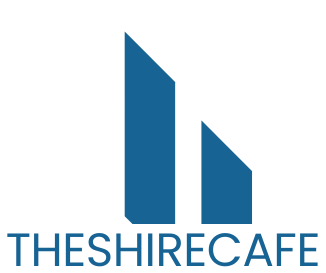FHA loans are like the Swiss Army knives of home financing—versatile, practical, and surprisingly handy in a pinch. But did you know they come with a secret weapon? Enter the assumable loan feature, where buyers can step into the shoes of the current homeowner and take over their mortgage. It’s like inheriting a fantastic pair of shoes without having to break them in!
Imagine snagging a low-interest rate while your friends are still wrestling with their own mortgage woes. With FHA loans being assumable, buyers can dive into a world of possibilities, making homeownership not just a dream but a reality. So, whether you’re a first-time buyer or a seasoned pro, understanding how FHA loans work could be the key to unlocking your next big move in real estate. Ready to explore the fun side of financing?
Table of Contents
ToggleUnderstanding FHA Loans
FHA loans provide a government-backed option for homebuyers. Such loans cater to a wide array of buyers, often featuring lower down payment requirements and more lenient credit score standards. Known for their flexibility, these loans can be particularly advantageous for first-time buyers and those with limited credit history.
Interest rates on FHA loans tend to be competitive. This means buyers might secure a mortgage at a lower cost compared to traditional loans. Additionally, the loan terms typically range from 15 to 30 years, providing options that can fit various financial situations.
Assumable FHA loans offer a unique opportunity. They allow prospective buyers to take over the existing mortgage of the seller, which can bring significant savings in interest rates. This feature attracts buyers in a rising interest rate environment, making it a strategic choice.
Key eligibility requirements exist for FHA loans. Borrowers must meet specific income limits and have a valid Social Security number. Lenders typically require a down payment of 3.5% for those with a credit score of at least 580, while those with scores between 500 and 579 may face a 10% down payment requirement.
The FHA also mandates mortgage insurance for all loan amounts. This insurance protects lenders against borrower default, ensuring lenders can maintain stability in the housing market. Understanding these elements enables better navigation of the FHA loan process and maximizes benefits for both buyers and sellers.
What Makes FHA Loans Assumable?

FHA loans feature a unique attribute that allows buyers to assume the existing mortgage, facilitating a smoother transaction. This capability can provide significant advantages for both buyers and sellers.
Benefits of Assumable FHA Loans
Assumable FHA loans offer several benefits that appeal to homebuyers. Lower interest rates often come attached, allowing buyers to secure financing at a more favorable cost. Limited closing costs represent another advantage, which can make the overall purchase more affordable. Flexibility stands out too; buyers appreciate the ability to step into an existing mortgage without needing to qualify for a new loan. For sellers, having an assumable loan can increase marketability, especially in a rising interest rate environment, as it positions their property more attractively.
Drawbacks of Assumable FHA Loans
Several drawbacks exist for assumable FHA loans that warrant consideration. Lenders may impose strict eligibility criteria, which could limit available options for some buyers. Remaining liability represents another concern; sellers must remain responsible for the mortgage if the buyer defaults. Limited loan amount could also pose challenges, as FHA loan limits vary by location and may not cover the entire home purchase price in high-cost areas. Additionally, not all FHA loans are assumable, creating potential confusion during the transaction process, which could complicate negotiations.
How to Assume an FHA Loan
Assuming an FHA loan provides an opportunity for buyers to take advantage of existing beneficial mortgage terms. The process involves specific steps that buyers must follow to ensure a smooth transition.
Steps to Assume an FHA Loan
Begin by contacting the lender. This step initiates the assumption process and clarifies the loan’s terms. Next, gather necessary documents, including financial statements and identification. Submitting these documents helps lenders assess the buyer’s qualifications. After that, an appraisal may occur to determine the property’s current value. Approval from the lender finalizes the assumption. Complete any required paperwork to secure the transfer of the loan.
Eligibility Requirements
Buyers must meet specific eligibility standards. A valid Social Security number is essential for the application. Additionally, creditworthiness plays a crucial role; lenders often look for a minimum credit score of 580. Income verification is necessary to ensure the borrower’s ability to repay the loan. Proper documentation of employment history also strengthens the application. Certain limitations, such as being under the FHA’s loan limits, apply in different regions. These requirements help maintain a stable borrowing environment.
Common Misconceptions About FHA Loans
FHA loans are often misunderstood in several ways. Many people believe these loans are available only for first-time homebuyers, but they are accessible to anyone who meets the criteria. FHA loans provide financing options for a diverse range of buyers, including those looking to purchase their second or third homes.
Some think that lower credit score requirements mean a lack of quality in these loans. In reality, the FHA sets these standards to help more individuals secure financing while minimizing the risk for lenders. A valid credit score of 580 or higher opens up the possibility of a 3.5% down payment, making homeownership more attainable.
Furthermore, people frequently assume that FHA loans don’t allow for assumability. In fact, certain FHA loans contain an assumable feature, letting buyers take over the seller’s mortgage under existing terms. This can translate into a significant advantage, particularly when interest rates are rising.
Another common misconception is related to mortgage insurance. FHA loans require mortgage insurance irrespective of the down payment amount, which some people view as a drawback. This insurance serves to protect lenders and contributes to market stability, benefiting all stakeholders involved.
Lastly, some believe that all FHA loans are restricted to low-income individuals and families. While there are income limits, many people still qualify based on their financial situation. Seller eligibility does not solely depend on income, allowing for flexibility in evaluating prospective buyers. Understanding these misconceptions helps clarify the true nature and possibilities of FHA loans, enhancing one’s approach to home financing.
FHA loans offer a unique opportunity for homebuyers looking for flexible financing options. The assumable feature provides significant advantages in today’s market by allowing buyers to take over existing mortgages with potentially lower interest rates. This can make homeownership more attainable for many.
As buyers and sellers navigate the complexities of FHA loans, understanding the eligibility criteria and the process for assuming a loan is crucial. By recognizing both the benefits and drawbacks, individuals can make informed decisions that align with their financial goals. FHA loans stand as a valuable resource in the real estate landscape, catering to a wide range of homebuyers.



